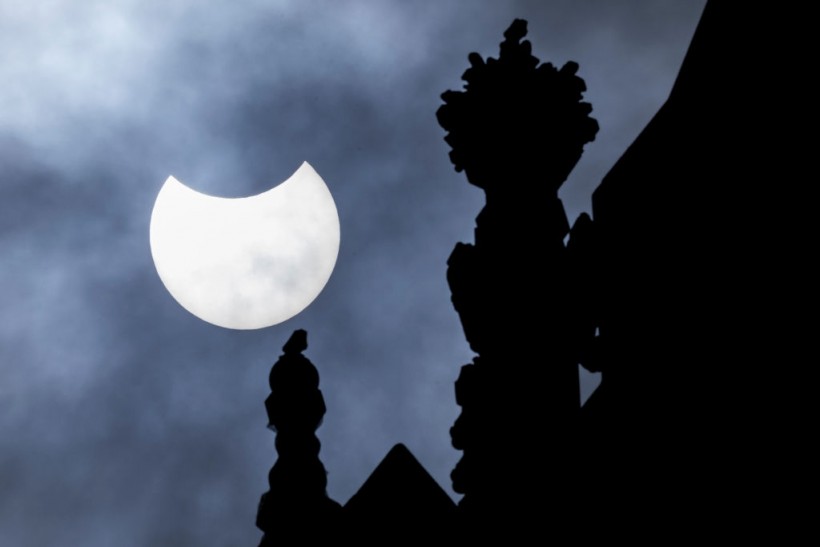Astronomy reports recently said a partial solar eclipse would be seen across the Northern Hemisphere early this week.
According to Phys.org, the eclipse will begin at 0858 GMT in Iceland and end off the coast of India at around 1302 GMT throughout Europe, the Middle East, and North America, on its way, as indicated in a report from the IMCEE institute of France's Paris Observatory.
Essentially, solar eclipses occur when the Moon passes between the Earth and the Sun, casting its shadow down onto Earth.
Meanwhile, a solar total eclipse occurs when the Moon blocks the disk of the Sun, momentarily plunging a portion of the Earth into total darkness.

A partial solar eclipse is seen over the Houses of Parliament on June 10, 2021, in London, England. Viewers in the UK will witness a partial solar eclipse this morning, with around a fifth of the Sun's light blocked in London.
Partial Eclipse
Nonetheless, Tuesday's eclipse is only partial, and the moon's shadow will not touch the Earth's surface at any point, according to the Paris Observatory.
Astronomer Florent Deleflie from Paris Observatory said, the moon will cover 82 percent, at the most, of the Sun over Kazakhstan, although it will not be enough to "darken the daylight."
A similar Dawn.com report specified that the sun needs to be at least 95 percent obscured to get the sense of darkness in the sky and perceive a cold light.
Those hoping to watch the eclipse should not look at the sun directly, even through clouds, to avoid eye damage, according to experts. Protective eyewear should be worn instead.https://t.co/k4VcgmJWGx
— Dawn.com (@dawn_com) October 22, 2022
Experts said that people who are hoping to watch the eclipse need to look at the Sun directly, even through clouds, to prevent eye damage. Protective eyewear needs to be worn instead.
2024 Solar Eclipse
Until a tiny piece of the Sun is missing, it will not be spectacular, Deleflie explained, adding it is always an occurrence for an amateur astronomer, and it can make for stunning images.
The most recent partial solar eclipse will be the 16th occurrence of the type, of the century and the second this year. NASA reported that the next total solar eclipse will happen in North America in early April 2024.
People anywhere in the lower 48 states, beyond the path of totality, will witness a partial solar eclipse, an interesting yet fundamental occurrence, American Eclipse reported.
Only inside the path, and only during the few minutes when the moon covers the solar surface, is it safe to look directly at the Sun. For that short period, the majestic outer atmosphere of the sun, also known as the corona, will be seen.
How Badly is Eye Care Needed When Watching the Solar Eclipse?
According to NASA, it is unsafe to look directly at the Sun minus specialized eye protection for solar viewing, except during the short total phase of a total solar eclipse, when the Moon blocks the bright face of the Sun.
Watching any part of the bright Sun through the lens of a camera, a telescope, or binoculars minus a special-purpose solar filter secured over the front of the optics will instantaneously result in severe eye injury.
Report about the partial solar eclipse is shown on Jayshree's YouTube video below:
RELATED ARTICLE: Jupiter and Venus 'Collides' This Weekend; How and Where to Watch Largest Giant, Morning Star Meet Up
Check out more news and information on Space in Science Times.














